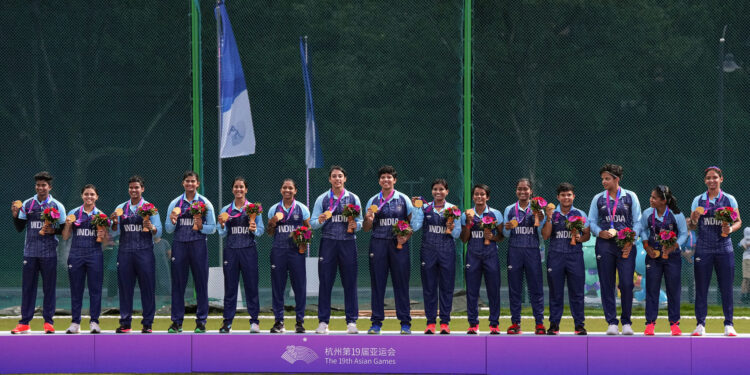Abstract:
Sports serve as a medium for self-improvement, promoting health, self-confidence, and teamwork. Historically, women’s participation in sports has been limited, particularly in India. Household responsibilities, cultural norms, and economic challenges often took precedence. However, the 20th century experienced a surge in women’s involvement in sports. Despite the shift, disparities remain, and challenges persist for women athletes in India. Yet, recent accomplishments, like India’s gold medal win in the Asian Games for cricket, illustrate the potential when women are given equal opportunities.
Introduction:
Worldwide, acceptance and popularity of women’s sports have increased. Some female athletes even surpass their male counterparts in certain disciplines. Nonetheless, women’s sports often don’t get the same support or attention as men’s. Historical references in India suggest limited sports engagement by women, primarily restricted to royal families. While post-independence policies aimed to promote sports among women, participation remains low due to social, economic, and infrastructural challenges.
Challenges for Women in Indian Sports:
The minimal number of Olympic medals won by Indian women underscores the disparity. While some challenges, like limited funding and political interference, affect both genders, women face unique obstacles. Societal expectations, security concerns, and lack of family support often hinder female athletes. In many regions, women are constrained to indoor games, primarily due to cultural barriers. Moreover, schools in remote areas lack proper sports facilities, further limiting opportunities.
Introduction:
Worldwide, acceptance and popularity of women’s sports have increased. Some female athletes even surpass their male counterparts in certain disciplines. Nonetheless, women’s sports often don’t get the same support or attention as men’s. Historical references in India suggest limited sports engagement by women, primarily restricted to royal families. While post-independence policies aimed to promote sports among women, participation remains low due to social, economic, and infrastructural challenges.
Introduction:
Worldwide, acceptance and popularity of women’s sports have increased. Some female athletes even surpass their male counterparts in certain disciplines. Nonetheless, women’s sports often don’t get the same support or attention as men’s. Historical references in India suggest limited sports engagement by women, primarily restricted to royal families. While post-independence policies aimed to promote sports among women, participation remains low due to social, economic, and infrastructural challenges.
Challenges for Women in Indian Sports:
The minimal number of Olympic medals won by Indian women underscores the disparity. While some challenges, like limited funding and political interference, affect both genders, women face unique obstacles. Societal expectations, security concerns, and lack of family support often hinder female athletes. In many regions, women are constrained to indoor games, primarily due to cultural barriers. Moreover, schools in remote areas lack proper sports facilities, further limiting opportunities.



